No products in the basket.
When drinking or tasting wine most people focus only on the smell and the taste of it, ignoring what ought to be the first step – looking at the wine’s colour and its general appearance. You might think that choosing red, white or rosé is all you need to think about in terms of the colour of wine but in fact the colour can give you a number of clues about the wine’s age, style, grape and even where it was produced. In blind and non-blind tastings sommeliers and wine experts always start by looking at the wine in the glass. Here’s how and why…
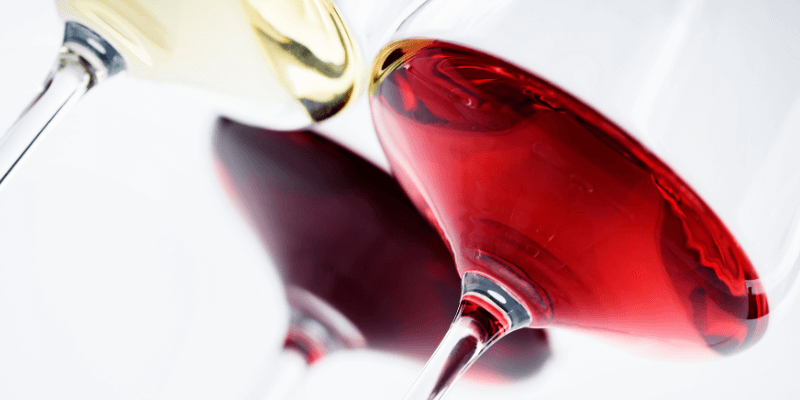
Look at the colour of the wine in a clear glass against a white background. Pouring wine only until the glass is a quarter or a third full means you can safely tip the wine glass to look at the colour without spilling any wine.

The colour of wine derives primarily from phenolic pigments found in the grape skins (the juice of most grapes, red, white or pink, is actually clear). There are more colour pigments in the skins of some grapes than in others so grape variety has some impact.
Interaction with oxygen during the wine-making process can also make the grape juice become darker but with careful treatment of the juice and/ or the addition of sulphur dioxide (you can find out more in my blog on sulphites in wine) this risk can be minimised.
Ageing or even fermenting a wine whether red, rosé or white, in oak, will alter the colour. Partly this is because of the slight oxidation that occurs when a wine is aged in oak barrels but also due to chemical reactions between the juice/ wine and the oak. Similarly aging a wine even in bottle means there will be some, albeit minimal, exposure to oxygen which will change the wine’s colour.
With age a white wine becomes darker whereas a red wine’s colour breaks down and so it becomes lighter.
The thicker the grape skin and the longer a wine is left on the grape skins (a process called maceration), the darker a wine will become. Similarly a harsh or heavy grape pressing will mean that more colour is extracted from the skins. Most reputable wine makers tend to press gently these days, mainly to avoid too much bitterness from the pips and stalks entering the juice.
In addition, for red wines, acidity has an effect on the colour; generally the higher the acidity the brighter, lighter red a wine is likely to be. This can also help in ascertaining the climate of the region a wine was produced in and therefore the origin of a wine. Cooler climate wine would generally have less ripe grapes and, if you remember from my blog on acidity in wine, therefore tends to have more acidity.
Wines from cooler regions are lighter both in colour and in body. Conversely wines with lower acidity from riper grapes grown in warm climate regions tend to be bigger and more full-bodied with deeper colour.

White wines are not white at all but range through a long list of shades from a pale lemon colour with green notes through different shades of gold to orange. White wines have tended to become paler over recent years as wine-making processes have improved; in particular there are now only very rare occurrences of over-oxidation which can cause deep gold to brown shades of white wine.
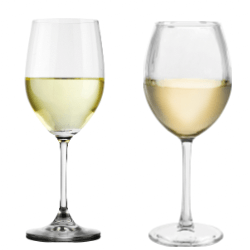
Paler white wines towards the lemon-green and lemon end of the spectrum are likely to be:
More gold-coloured white wines are more likely to be:
Amber or orange white wines are more likely to be:
By the way, I tend to find that people who say they get headaches from white wine prefer to drink the lighter coloured wines. I do wonder whether there is something in oak that might not agree with some people…
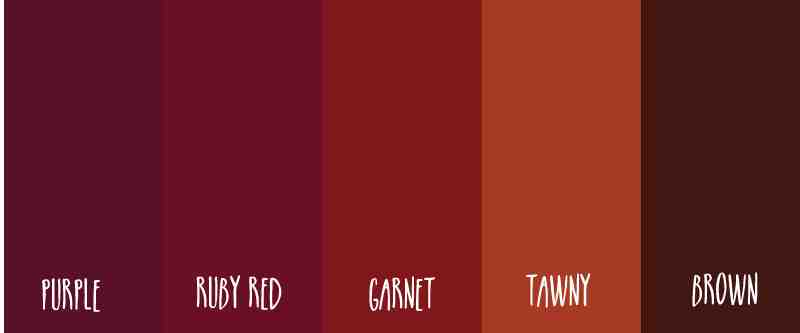
There are many hues of red wine, perhaps more than for white wine, or perhaps simply more distinguishable. To keep things simple, red wines can range from bluey purple through crimson reds to browner shades of red to brown itself e.g. in tawny port.
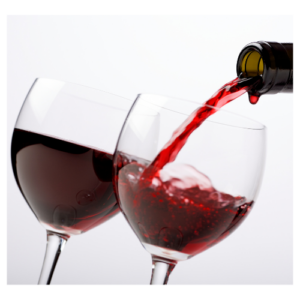
Red wines at the purple and light red end of the spectrum are more likely to be
A garnet-coloured wine which is a deep red with brick-coloured hues is more likely to be
A red wine at the tawny or brown end of the spectrum is likely to be

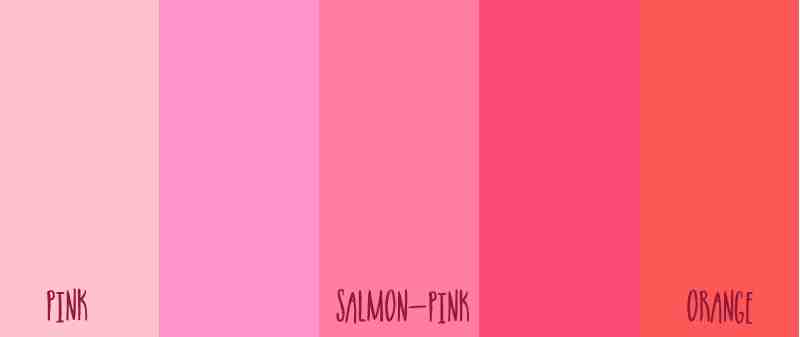
Rosé wines can range from the most delicate pink through salmon pink hues to orange. They take their colour from the black grapes used in their production – particularly important is the length of time the juice is left on the skins for extraction of the colour. In recent times the preference seems to be the paler Provence-style rosés.
Pale pink rosé wine is likely to be
Rosés that veer towards salmon-pink and orange are more likely to be
You can read more about rosé in my guide to rosé wine.
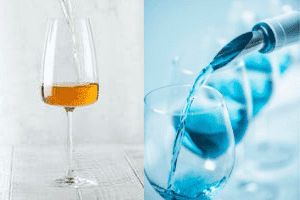
There are a couple of colours of wine not yet mentioned – orange wine and blue wine. Yes, really. I’ll cover these in another blogpost as they are not (yet?) mainstream although orange wine definitely has its fans.
I don’t have the space in this blog to cover other visual observations that can be made about wine e.g. colour intensity, clarity, deposits, legs etc. The lack of space has also meant that I have had to make some broad generalisations. Nevertheless colour is an important factor for sommeliers and wine experts when asked to taste a wine blind. Once they look at the clues, combine their thoughts on the colour of a wine with an analysis of the aromas and flavours, they can usually make a good guess on the origin of the wine.
© 2014-2025 Wines with Attitude Ltd | VAT Reg. No. 181 2419 22 | Registered in England 08918466 | Fiveways, 57-59 Hatfield Road, Potters Bar, Herts, EN6 1HS